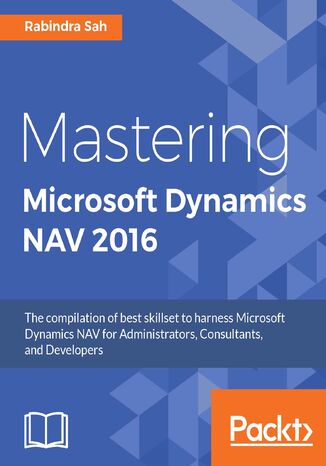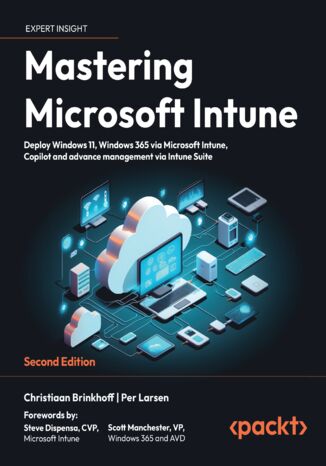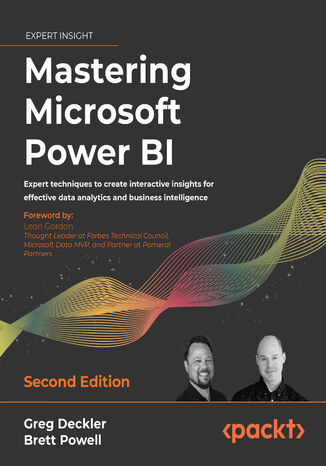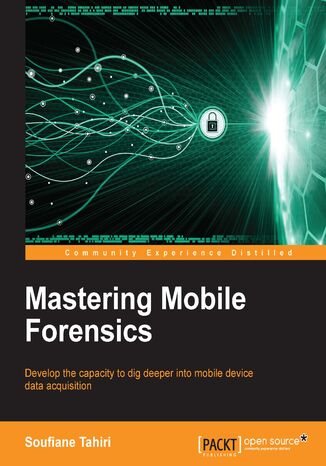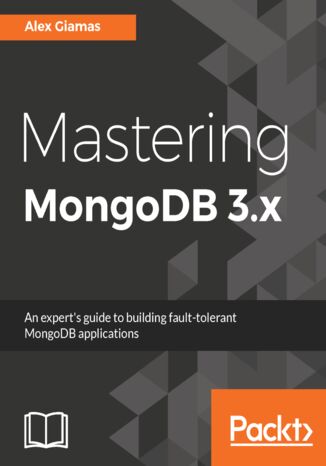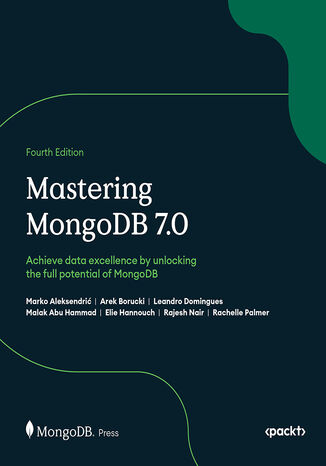Категорії
-
- Біткойн
- Ділова жінка
- Коучинг
- Контроль
- Електронний бізнес
- Економіка
- Фінанси
- Фондова біржа та інвестиції
- Особисті компетенції
- Комп'ютер в офісі
- Комунікація та переговори
- Малий бізнес
- Маркетинг
- Мотивація
- Мультимедійне навчання
- Нерухомість
- Переконання та НЛП
- Податки
- Соціальна політика
- Порадники
- Презентації
- Лідерство
- Зв'язки з громадськістю
- Звіти, аналізи
- Секрет
- Соціальні засоби комунікації
- Продаж
- Стартап
- Ваша кар'єра
- Управління
- Управління проектами
- Людські ресурси (HR)
-
- Architektura i wnętrza
- Безпека життєдіяльності
- Biznes i Ekonomia
- Будинок та сад
- Електронний бізнес
- Ekonomia i finanse
- Езотерика
- Фінанси
- Особисті фінанси
- Бізнес
- Фотографія
- Інформатика
- Відділ кадрів та оплата праці
- Для жінок
- Комп'ютери, Excel
- Бухгалтерія
- Культура та література
- Наукові та академічні
- Охорона навколишнього середовища
- Впливові
- Освіта
- Податки
- Подорожі
- Психологія
- Релігія
- Сільське господарство
- Ринок книг і преси
- Транспорт та спедиція
- Здоров'я та краса
-
- Офісні застосунки
- Бази даних
- Біоінформатика
- Бізнес ІТ
- CAD/CAM
- Digital Lifestyle
- DTP
- Електроніка
- Цифрова фотографія
- Комп'ютерна графіка
- Ігри
- Хакування
- Hardware
- IT w ekonomii
- Наукові пакети
- Шкільні підручники
- Основи комп'ютера
- Програмування
- Мобільне програмування
- Інтернет-сервери
- Комп'ютерні мережі
- Стартап
- Операційні системи
- Штучний інтелект
- Технологія для дітей
- Вебмайстерність
-
- Антології
- Балада
- Біографії та автобіографії
- Для дорослих
- Драми
- Журнали, щоденники, листи
- Епос, епопея
- Нарис
- Наукова фантастика та фантастика
- Фельєтони
- Художня література
- Гумор, сатира
- Інше
- Класичний
- Кримінальний роман
- Нехудожня література
- Художня література
- Mity i legendy
- Лауреати Нобелівської премії
- Новели
- Побутовий роман
- Okultyzm i magia
- Оповідання
- Спогади
- Подорожі
- Оповідна поезія
- Поезія
- Політика
- Науково-популярна
- Роман
- Історичний роман
- Проза
- Пригодницька
- Журналістика
- Роман-репортаж
- Romans i literatura obyczajowa
- Сенсація
- Трилер, жах
- Інтерв'ю та спогади
-
- Археологія
- Bibliotekoznawstwo
- Кінознавство / Теорія кіно
- Філологія
- Польська філологія
- Філософія
- Finanse i bankowość
- Географія
- Економіка
- Торгівля. Світова економіка
- Історія та археологія
- Історія мистецтва і архітектури
- Культурологія
- Мовознавство
- літературні студії
- Логістика
- Математика
- Ліки
- Гуманітарні науки
- Педагогіка
- Навчальні засоби
- Науково-популярна
- Інше
- Психологія
- Соціологія
- Театральні студії
- Богослов’я
- Економічні теорії та науки
- Transport i spedycja
- Фізичне виховання
- Zarządzanie i marketing
-
- Безпека життєдіяльності
- Історія
- Дорожній кодекс. Водійські права
- Юридичні науки
- Охорона здоров'я
- Загальне, компендіум
- Академічні підручники
- Інше
- Закон про будівництво і житло
- Цивільне право
- Фінансове право
- Господарське право
- Господарське та комерційне право
- Кримінальний закон
- Кримінальне право. Кримінальні злочини. Кримінологія
- Міжнародне право
- Міжнародне та іноземне право
- Закон про охорону здоров'я
- Закон про освіту
- Податкове право
- Трудове право та законодавство про соціальне забезпечення
- Громадське, конституційне та адміністративне право
- Кодекс про шлюб і сім'ю
- Аграрне право
- Соціальне право, трудове право
- Законодавство Євросоюзу
- Промисловість
- Сільське господарство та захист навколишнього середовища
- Словники та енциклопедії
- Державні закупівлі
- Управління
-
- Африка
- Альбоми
- Південна Америка
- Центральна та Північна Америка
- Австралія, Нова Зеландія, Океанія
- Австрія
- Азії
- Балкани
- Близький Схід
- Болгарія
- Китай
- Хорватія
- Чеська Республіка
- Данія
- Єгипет
- Естонія
- Європа
- Франція
- Гори
- Греція
- Іспанія
- Нідерланди
- Ісландія
- Литва
- Латвія
- Mapy, Plany miast, Atlasy
- Мініпутівники
- Німеччина
- Норвегія
- Активні подорожі
- Польща
- Португалія
- Інше
- Przewodniki po hotelach i restauracjach
- Росія
- Румунія
- Словаччина
- Словенія
- Швейцарія
- Швеція
- Світ
- Туреччина
- Україна
- Угорщина
- Велика Британія
- Італія
-
- Філософія життя
- Kompetencje psychospołeczne
- Міжособистісне спілкування
- Mindfulness
- Загальне
- Переконання та НЛП
- Академічна психологія
- Психологія душі та розуму
- Психологія праці
- Relacje i związki
- Батьківство та дитяча психологія
- Вирішення проблем
- Інтелектуальний розвиток
- Секрет
- Сексуальність
- Спокушання
- Зовнішній вигляд та імідж
- Філософія життя
-
- Біткойн
- Ділова жінка
- Коучинг
- Контроль
- Електронний бізнес
- Економіка
- Фінанси
- Фондова біржа та інвестиції
- Особисті компетенції
- Комунікація та переговори
- Малий бізнес
- Маркетинг
- Мотивація
- Нерухомість
- Переконання та НЛП
- Податки
- Соціальна політика
- Порадники
- Презентації
- Лідерство
- Зв'язки з громадськістю
- Секрет
- Соціальні засоби комунікації
- Продаж
- Стартап
- Ваша кар'єра
- Управління
- Управління проектами
- Людські ресурси (HR)
-
- Антології
- Балада
- Біографії та автобіографії
- Для дорослих
- Драми
- Журнали, щоденники, листи
- Епос, епопея
- Нарис
- Наукова фантастика та фантастика
- Фельєтони
- Художня література
- Гумор, сатира
- Інше
- Класичний
- Кримінальний роман
- Нехудожня література
- Художня література
- Mity i legendy
- Лауреати Нобелівської премії
- Новели
- Побутовий роман
- Okultyzm i magia
- Оповідання
- Спогади
- Подорожі
- Поезія
- Політика
- Науково-популярна
- Роман
- Історичний роман
- Проза
- Пригодницька
- Журналістика
- Роман-репортаж
- Romans i literatura obyczajowa
- Сенсація
- Трилер, жах
- Інтерв'ю та спогади
-
- Філософія життя
- Міжособистісне спілкування
- Mindfulness
- Загальне
- Переконання та НЛП
- Академічна психологія
- Психологія душі та розуму
- Психологія праці
- Relacje i związki
- Батьківство та дитяча психологія
- Вирішення проблем
- Інтелектуальний розвиток
- Секрет
- Сексуальність
- Спокушання
- Зовнішній вигляд та імідж
- Філософія життя
Microsoft Dynamics 365 is an all-in-one business management solution that's easy to use and adapt. It helps you connect your finances, sales, service, and operations to streamline business processes, improve customer interactions, and enable growth. This book gives you all the information you need to become an expert in MS Dynamics 365.This book starts with a brief overview of the functional features of Dynamics 365. You will learn how to create Word and Excel templates using CRM data to enable customized data analysis for your organization. This book helps you understand how to use Dynamics 365 as an XRM Framework, gain a deep understanding of client-side scripting in Dynamics 365, and create client-side applications using JavaScript and the Web API.In addition to this, you will discover how to customize Dynamics 365, and quickly move on to grasp the app structure, which helps you customize Dynamics 365 better. You will also learn how Dynamics 365 can be seamlessly embedded into various productivity tools to customize them for machine learning and contextual guidance.By the end of this book, you will have mastered utilizing Dynamics 365 features through real-world scenarios.
Microsoft Dynamics CRM is the most trusted name in enterprise-level customer relationship management. The latest version of Dynamics CRM 2016 comes with some exciting extra features guaranteed to make your life easier with Dynamics CRM. This book provides a comprehensive coverage of Dynamics CRM 2016 and helps you make your tasks much simpler while elevating you to the level of an expert.The book starts with a brief overview of the functional features and then introduces the latest features of Dynamics CRM 2016. You will learn to create Word and Excel templates, using CRM data that will enable you to provide customized data analysis for your organization. You will understand how to utilize Dynamics CRM as an XRM Framework, gain a deep understanding about client-side scripting in Dynamics CRM, and learn creating client-side applications using JavaScript and Web API. We then introduce visual control frameworks for Dynamics CRM 2016 mobile and tablet applications. Business Process Flows, Business Rules, and their enhancements are introduced. By the end of this book, you will have mastered utilizing Dynamics CRM 2016 features through real-world scenarios.
The book begins by giving you a brief introduction to setting up your NAV environment and shows you how to install and configure it according to your requirements. You will then dive deep into the latest design patterns, network architecture, and topologies. We will show you how you can integrate NAV with the Microsoft platform, and secure your deployment by managing roles and permissions.Moving on, we will explain how to monitor and manage server instances using the Administration tool. We’ll discuss how you can take advantage of the expanded extensibility and connectivity capabilities for a tighter integration with the cloud as well as handheld devices. Then, we’ll show you how you can make use of the PowerBI capabilities that have been built into Dynamics NAV.By the end of the book, you will be confident in developing and administering a Dynamics NAV implementation that will leverage all of the new features.
Christiaan Brinkhoff, Per Larsen, Ken Pan, Scott Manchester
Microsoft Modern Workplace solutions can simplify the management layer of your environment remarkably if you take the time to understand and implement them. With this book, you’ll learn everything you need to know to make the shift to Modern Workplace, running Windows 10, Windows 11, or Windows 365.Mastering Microsoft Endpoint Manager explains various concepts in detail to give you the clarity to plan how to use Microsoft Endpoint Manager (MEM) and eliminate potential migration challenges beforehand. You'll get to grips with using new services such as Windows 365 Cloud PC, Windows Autopilot, profile management, monitoring and analytics, and Universal Print. The book will take you through the latest features and new Microsoft cloud services to help you to get to grips with the fundamentals of MEM and understand which services you can manage. Whether you are talking about physical or cloud endpoints—it’s all covered.By the end of the book, you'll be able to set up MEM and use it to run Windows 10, Windows 11, and Windows 365 efficiently.
Erez Ben-Ari, Rainier Amara, Erez Y Ben
While UAG is built to integrate with many environments and publish dozens of application types, many organizations require a certain level of customization to meet their needs.With this book in hand, you will be equipped to deal with these types of customization scenarios, and you will be confident in using such workarounds without hassle and trial and error.Written by some of the leading experts on UAG, Mastering Microsoft Forefront UAG 2010 Customization covers the most complex and challenging options for customizing UAG in a way that is friendly and easy to follow. It walks you through various customization tasks, including explanations and code samples, as well as creative ideas for troubleshooting your work.Until now, only a few of the extensions to UAG's services have been publicly available, and most were only known to a select few. Now, this can include you!Throughout this book, you will tackle how to change the system's look-and-feel, deal with advanced authentication schemes and write special functions that need to be executed as part of the client interaction. With Mastering Microsoft Forefront UAG 2010 Customization, you too can learn how to customize various aspects of UAG's functionality to enhance your organization or customers' experience.
Christiaan Brinkhoff, Per Larsen, Steve Dispensa, Scott Manchester
Microsoft Intune is the leading management solution to manage your Windows environment from every angle. While it offers powerful capabilities to simplify management and migration processes, many organizations struggle with implementation and adoption. This book will provide you with all the information you need to successfully transition to Microsoft Intune.Written by Microsoft experts Christiaan Brinkhoff and Per Larsen, Mastering Microsoft Intune, Second Edition delivers in-depth insights into using Microsoft Intune efficiently. You'll learn how management and AI come together with the latest Intune Suite capabilities to secure your endpoints and maximize security for both physical and Cloud PCs.This book will help you deploying Windows 11 and Windows 365, implementing Windows Autopilot, managing applications, configuring advanced policies, and leveraging new innovations like Windows Copilot and Security Copilot. With their decades of field experience, you'll master everything from identity and security management to monitoring and analytics, including Universal Print via the Cloud.By the end of this book, you'll be able to set up Intune and use it to run Windows 11 and Windows 365 efficiently with the latest innovations such as Intune Suite and AI (Copilot) from Microsoft included!
This book is intended for business intelligence professionals responsible for the design and development of Power BI content as well as managers, architects and administrators who oversee Power BI projects and deployments. The chapters flow from the planning of a Power BI project through the development and distribution of content to the administration of Power BI for an organization.BI developers will learn how to create sustainable and impactful Power BI datasets, reports, and dashboards. This includes connecting to data sources, shaping and enhancing source data, and developing an analytical data model. Additionally, top report and dashboard design practices are described using features such as Bookmarks and the Power KPI visual.BI managers will learn how Power BI’s tools work together such as with the On-premises data gateway and how content can be staged and securely distributed via Apps. Additionally, both the Power BI Report Server and Power BI Premium are reviewed.By the end of this book, you will be confident in creating effective charts, tables, reports or dashboards for any kind of data using the tools and techniques in Microsoft Power BI.
Greg Deckler, Brett Powell, Leon Gordon
Mastering Microsoft Power BI, Second Edition, provides an advanced understanding of Power BI to get the most out of your data and maximize business intelligence. This updated edition walks through each essential phase and component of Power BI, and explores the latest, most impactful Power BI features.Using best practices and working code examples, you will connect to data sources, shape and enhance source data, and develop analytical data models. You will also learn how to apply custom visuals, implement new DAX commands and paginated SSRS-style reports, manage application workspaces and metadata, and understand how content can be staged and securely distributed via Power BI apps. Furthermore, you will explore top report and interactive dashboard design practices using features such as bookmarks and the Power KPI visual, alongside the latest capabilities of Power BI mobile applications and self-service BI techniques. Additionally, important management and administration topics are covered, including application lifecycle management via Power BI pipelines, the on-premises data gateway, and Power BI Premium capacity.By the end of this Power BI book, you will be confident in creating sustainable and impactful charts, tables, reports, and dashboards with any kind of data using Microsoft Power BI.
Andrea Tosato, Marco Minerva, Emanuele Bartolesi
The Minimal APIs feature, introduced in .NET 6, is the answer to code complexity and rising dependencies in creating even the simplest of APIs. Minimal APIs facilitate API development using compact code syntax and help you develop web APIs quickly.This practical guide explores Minimal APIs end-to-end and helps you take advantage of its features and benefits for your ASP.NET Core projects. The chapters in this book will help you speed up your development process by writing less code and maintaining fewer files using Minimal APIs. You’ll also learn how to enable Swagger for API documentation along with CORS and handle application errors. The book even promotes ideas to structure your code in a better way using the dependency injection library in .NET. Finally, you'll learn about performance and benchmarking improvements for your apps.By the end of this book, you’ll be able to fully leverage new features in .NET 6 for API development and explore how Minimal APIs are an evolution over classical web API development in ASP.NET Core.
Mastering Mobile Forensics. Develop the capacity to dig deeper into mobile device data acquisition
Mobile forensics presents a real challenge to the forensic community due to the fast and unstoppable changes in technology. This book aims to provide the forensic community an in-depth insight into mobile forensic techniques when it comes to deal with recent smartphones operating systemsStarting with a brief overview of forensic strategies and investigation procedures, you will understand the concepts of file carving, GPS analysis, and string analyzing. You will also see the difference between encryption, encoding, and hashing methods and get to grips with the fundamentals of reverse code engineering. Next, the book will walk you through the iOS, Android and Windows Phone architectures and filesystem, followed by showing you various forensic approaches and data gathering techniques. You will also explore advanced forensic techniques and find out how to deal with third-applications using case studies. The book will help you master data acquisition on Windows Phone 8. By the end of this book, you will be acquainted with best practices and the different models used in mobile forensics.
Web penetration testing is a growing, fast-moving, and absolutely critical field in information security. This book executes modern web application attacks and utilises cutting-edge hacking techniques with an enhanced knowledge of web application security.We will cover web hacking techniques so you can explore the attack vectors during penetration tests. The book encompasses the latest technologies such as OAuth 2.0, Web API testing methodologies and XML vectors used by hackers. Some lesser discussed attack vectors such as RPO (relative path overwrite), DOM clobbering, PHP Object Injection and etc. has been covered in this book.We'll explain various old school techniques in depth such as XSS, CSRF, SQL Injection through the ever-dependable SQLMap and reconnaissance. Websites nowadays provide APIs to allow integration with third party applications, thereby exposing a lot of attack surface, we cover testing of these APIs using real-life examples. This pragmatic guide will be a great benefit and will help you prepare fully secure applications.
Mastering MongoDB 3.x. An expert's guide to building fault-tolerant MongoDB applications
MongoDB has grown to become the de facto NoSQL database with millions of users—from small startups to Fortune 500 companies. Addressing the limitations of SQL schema-based databases, MongoDB pioneered a shift of focus for DevOps and offered sharding and replication maintainable by DevOps teams. The book is based on MongoDB 3.x and covers topics ranging from database querying using the shell, built in drivers, and popular ODM mappers to more advanced topics such as sharding, high availability, and integration with big data sources.You will get an overview of MongoDB and how to play to its strengths, with relevant use cases. After that, you will learn how to query MongoDB effectively and make use of indexes as much as possible. The next part deals with the administration of MongoDB installations on-premise or in the cloud. We deal with database internals in the next section, explaining storage systems and how they can affect performance. The last section of this book deals with replication and MongoDB scaling, along with integration with heterogeneous data sources. By the end this book, you will be equipped with all the required industry skills and knowledge to become a certified MongoDB developer and administrator.
MongoDB is the best platform for working with non-relational data and is considered to be the smartest tool for organizing data in line with business needs. The recently released MongoDB 4.x supports ACID transactions and makes the technology an asset for enterprises across the IT and fintech sectors. This book provides expertise in advanced and niche areas of managing databases (such as modeling and querying databases) along with various administration techniques in MongoDB, thereby helping you become a successful MongoDB expert. The book helps you understand how the newly added capabilities function with the help of some interesting examples and large datasets. You will dive deeper into niche areas such as high-performance configurations, optimizing SQL statements, configuring large-scale sharded clusters, and many more. You will also master best practices in overcoming database failover, and master recovery and backup procedures for database security.By the end of the book, you will have gained a practical understanding of administering database applications both on premises and on the cloud; you will also be able to scale database applications across all servers.
MongoDB is a leading non-relational database. This book covers all the major features of MongoDB including the latest version 6. MongoDB 6.x adds many new features and expands on existing ones such as aggregation, indexing, replication, sharding and MongoDB Atlas tools. Some of the MongoDB Atlas tools that you will master include Atlas dedicated clusters and Serverless, Atlas Search, Charts, Realm Application Services/Sync, Compass, Cloud Manager and Data Lake.By getting hands-on working with code using realistic use cases, you will master the art of modeling, shaping and querying your data and become the MongoDB oracle for the business. You will focus on broadly used and niche areas such as optimizing queries, configuring large-scale clusters, configuring your cluster for high performance and availability and many more. Later, you will become proficient in auditing, monitoring, and securing your clusters using a structured and organized approach.By the end of this book, you will have grasped all the practical understanding needed to design, develop, administer and scale MongoDB-based database applications both on premises and on the cloud.
Marko Aleksendrić, Arek Borucki, Leandro Domingues, Malak Abu Hammad, ...
Mastering MongoDB 7.0 explores the latest version of MongoDB, an exceptional NoSQL database solution that aligns with the needs of modern web applications. This book starts with an informative overview of MongoDB’s architecture and developer tools, guiding you through the process of connecting to databases seamlessly.This MongoDB book explores advanced queries in detail, including aggregation pipelines and multi-document ACID transactions. It delves into the capabilities of the MongoDB Atlas developer data platform and the latest features, such as Atlas Vector Search, and their role in AI applications, enabling developers to build applications with the scalability and performance that today’s organizations need. It also covers the creation of resilient search functionality using MongoDB Atlas Search. Mastering MongoDB 7.0’s deep coverage of advanced techniques encompasses everything from role-based access control (RBAC) to user management, auditing practices, and encryption across data, network, and storage layers.By the end of this book, you’ll have developed the skills necessary to create efficient, secure, and high-performing applications using MongoDB. You’ll have the confidence to undertake complex queries, integrate robust applications, and ensure data security to overcome modern data challenges.



